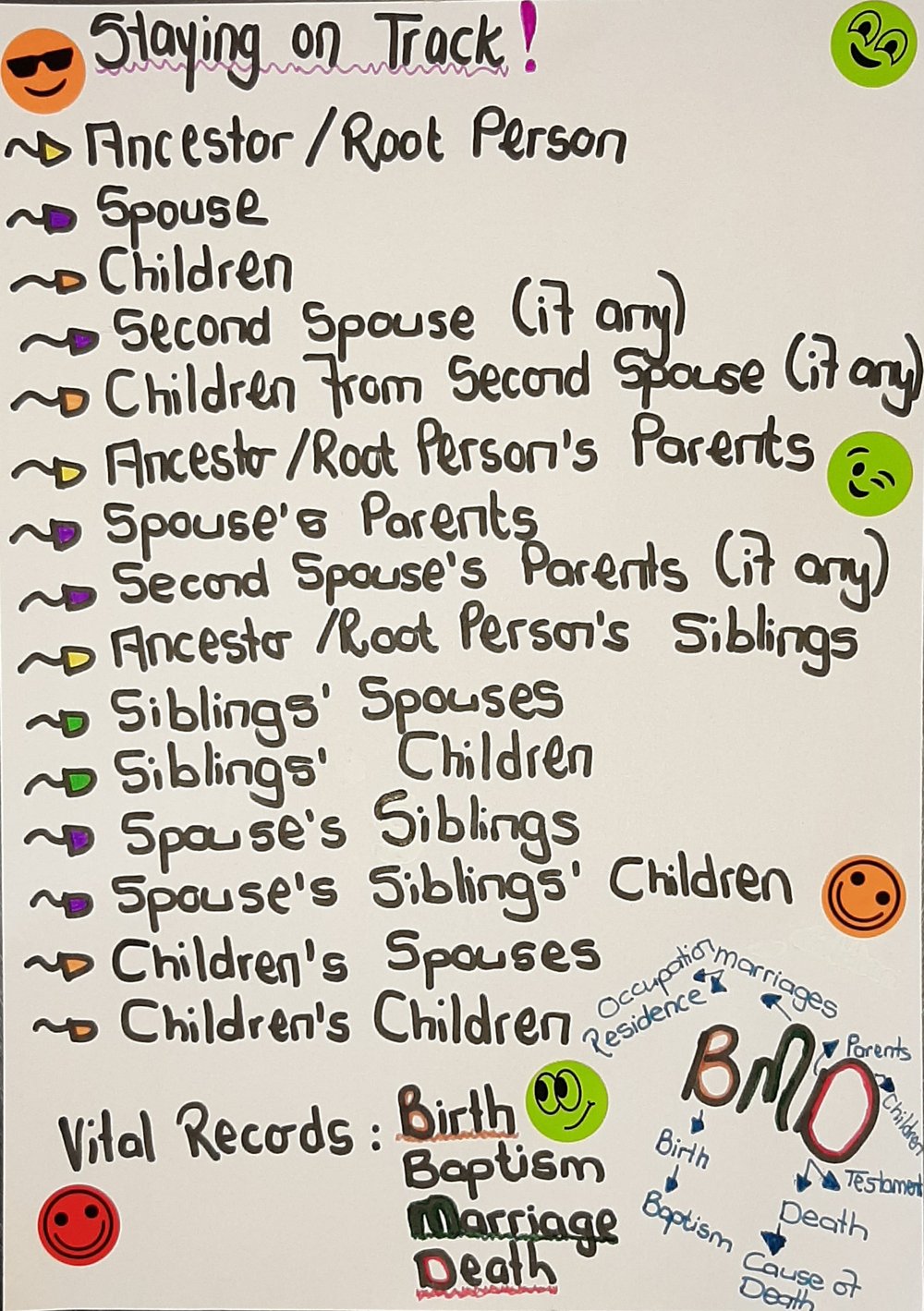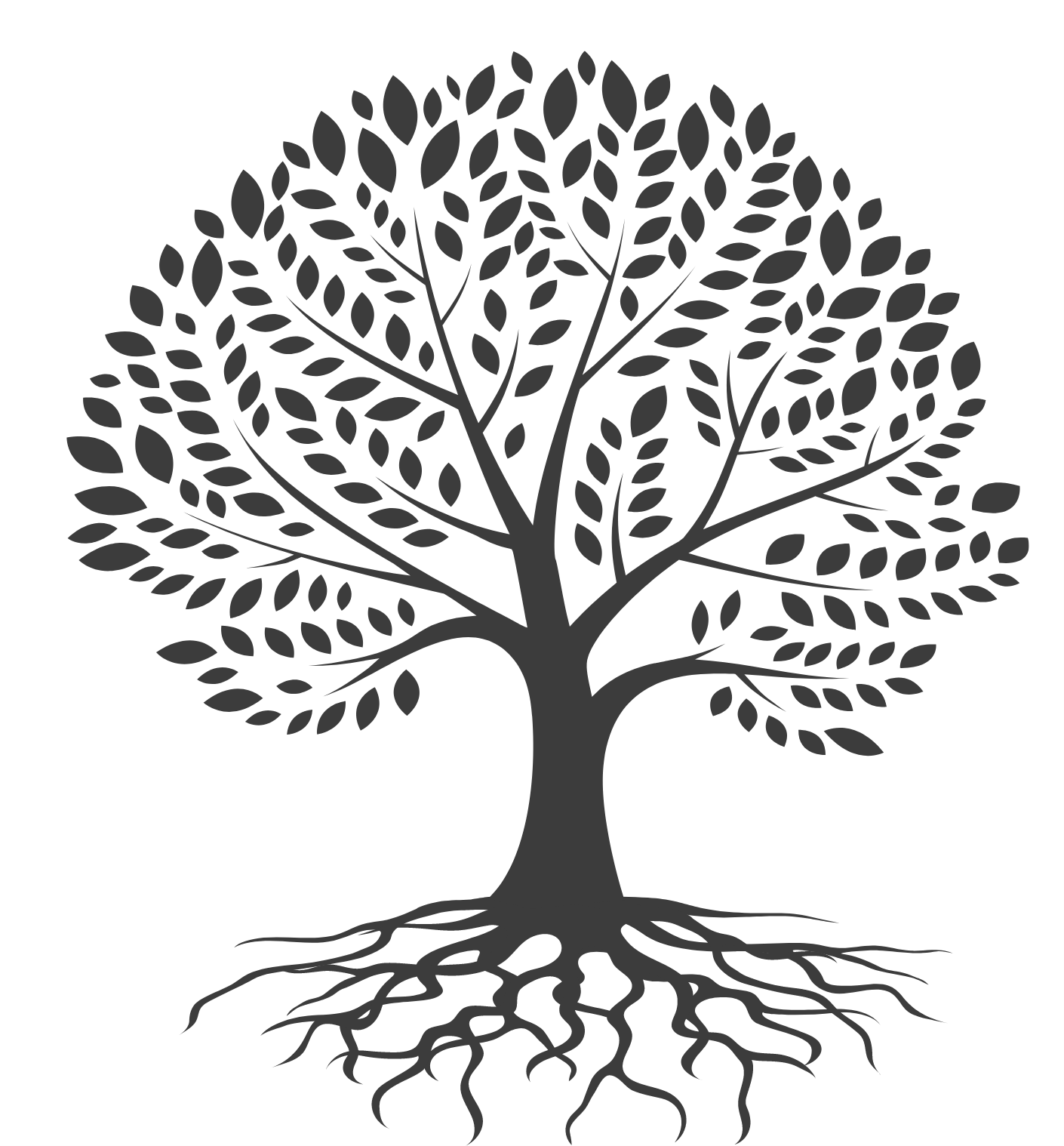Hello, fellow genealogy enthusiasts!
In the realm of genealogy, embarking on the journey to trace your family roots and uncover your ancestors' stories is both a thrilling adventure and a daunting puzzle. With years of research under my belt, I've discovered a fundamental truth – while there's an abundance of information on what you should do, there's a conspicuous lack of guidance on how to organize your research effectively. The result? More questions than answers. But fear not, for I've developed a systematic approach that has proven to be a game-changer in my genealogy research endeavors.
The Genealogist's Roadmap: A Tried-and-Tested List
Imagine having a clear roadmap that keeps you on track, wards off those pesky rabbit holes, and ensures your focus remains razor-sharp. This roadmap, in the form of a well-crafted list, is the key to maintaining your genealogical sanity. It goes as follows:

1. Ancestor/Root Person: The heart of your research, the individual from whom it all begins.
2. Spouse: A partner's story can reveal new perspectives and connections.
3. Children: The direct descendants are a crucial piece of the puzzle.
4. Second Spouse: For ancestors who experienced more than one marital journey.
5. Children of a Second Spouse:Expanding your family tree even further.
6. Ancestor/Root Person's Parents: Going back a generation to better understand your direct ancestor's origins.
7. Spouse's Parents: Investigating your ancestor's in-laws can lead to hidden treasures.
8. Ancestor/Root Person's Siblings: A wider exploration into the extended family.
9. Spouse's Siblings: Another avenue for connections and insights.
10. Children's Children: Tracing the lineage down to the youngest generation.
Why Does This System Work?
My genealogical journey was often a labyrinth of documents, stories, and conflicting information. It was all too easy to get lost in the vast landscape of my family's history. That's where this list comes to the rescue. Here's why it's a game-changer:
1. Clarity: This systematic approach provides clarity, helping you know where to start and what to prioritize.
2. Focusing on Goals: By breaking your research into manageable chunks, you can set specific goals for each category. This makes the process more engaging and productive.
3. Avoiding Rabbit Holes: We've all fallen down the rabbit hole of fascinating but irrelevant discoveries. This list keeps you grounded and less prone to distractions.
4. Comprehensive Coverage: It ensures that no stone is left unturned, making your genealogy research more comprehensive.
Integrating BMD Records
In the pursuit of genealogy, I've found that a critical component of this roadmap is the quest for Birth, Marriage, and Death (BMD) records. These records provide the foundational building blocks of your ancestors' life stories. They offer essential data such as birthdates, marriage details, and, perhaps most poignantly, the date of their passing. In my experience, incorporating BMD records into each category of your roadmap is like infusing life into your ancestors' narratives.
For instance:
- Ancestor/Root Person: Begin your journey with the BMD records of your central figure. Birth records provide the birthdate, while marriage records offer insights into their union, and death records mark the conclusion of their earthly journey. While exploring other details like occupation, residence, and census data can certainly enrich your understanding, BMD records remain the foundation upon which your research is built.
- Spouse: Uncover the BMD records of your ancestor's spouse to gain a holistic understanding of their shared history. Again, additional information such as occupation and residence can add depth, but it's BMD records that solidify the core of their story.
- Children and Beyond: Extend this exploration to the children, the parents, and the siblings in your roadmap. Each set of BMD records adds another layer to the tapestry of your family's history. Should you discover further details like census records, occupation, and residence, consider them valuable supplements to your research. These pieces of information can provide context and color to the lives of your ancestors.
Thoroughly Gathering Information
Once you've embarked on this roadmap, the key to successful genealogy research is to gather as much information as possible about each person before moving on to the next. It's like diving deep into the life and history of each family member.
By ensuring that you've collected comprehensive data, you not only create a richer family narrative but also reduce the risk of missing essential details. This comprehensive approach helps you to truly understand your ancestors' lives, their connections, and the stories they carry with them.

A Binder for Your Treasures
But that's not all. This systematic approach isn't just about research. It's also my trusted system for organizing the profiles in my genealogy binder. Imagine having neatly organized sections for each of these categories, making it effortless to find the documents, photographs, and stories associated with each family member.
By employing this roadmap, not only have I streamlined my research, but I've also created an organized binder that I can easily reference at any time. It's like having a library of family history at my fingertips.
A Personalized Journey
While this list and the integration of BMD records offer a fantastic structure, remember that genealogy is a deeply personal endeavor. Feel free to adapt and adjust it to suit your needs. If you find other categories that are more relevant to your family's history, include them. The goal is to create a roadmap that works for you and keeps your passion for uncovering your family's stories alive.
In conclusion, genealogy research is a complex and fulfilling pursuit, but it doesn't have to be overwhelming. By employing a structured approach like the one I've outlined, with BMD records as your guiding lights, you'll be better equipped to navigate the labyrinth of your family's past. With clear goals, organized steps, and a personalized touch, you'll find the answers you seek and unearth the rich tapestry of your ancestry. Happy researching!



Comments ()